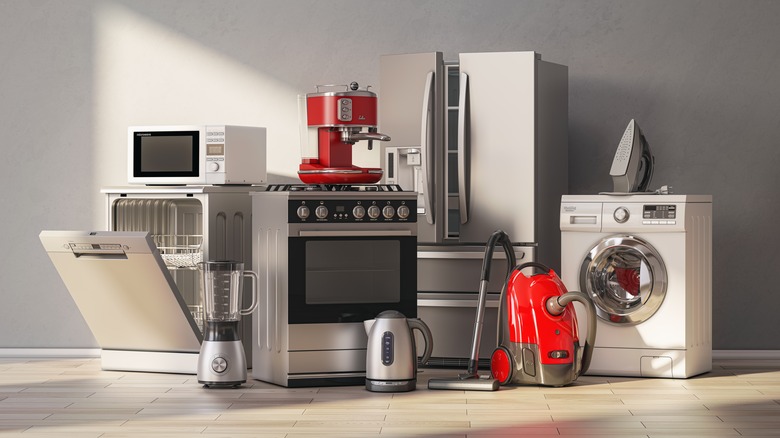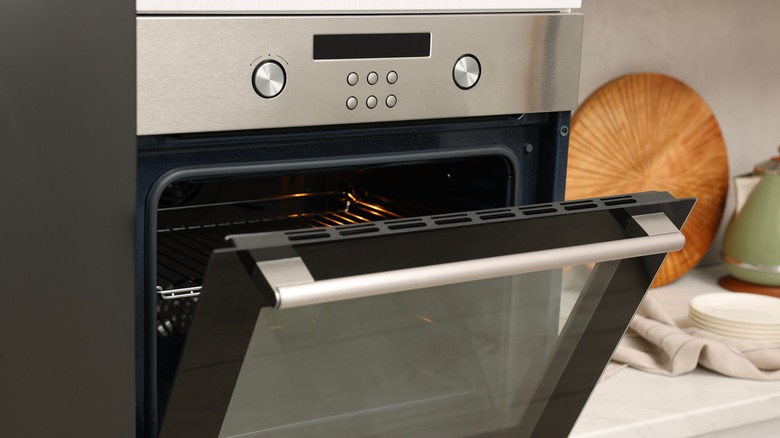The Kitchen Appliance That's Leading To A Sky-High Utility Bill
Inflation is no joke, and we're all just trying to figure out ways to keep more of our money in the bank. That being said, it's no surprise that utility bills are some of the worst offenders, and when left unchecked, you can get one that drops your jaw. So, which one of your appliances is sucking you dry? It's none other than the electric oven — one of those kitchen workhorses that quietly racks up electricity use behind all the glam of stovetop burners or sleek refrigerators. Many ovens operate between 2,000 and 5,000 watts, which, multiplied by hours in use, can result in significant energy draw during cooking and baking.
Because ovens must heat not only the food but the entire interior cavity (and maintain that temperature despite heat loss when opening the door), they operate less efficiently than many kitchen appliances. That inefficiency compounds when oven use is prolonged or when preheating is done repeatedly — and the length of continuous operation and how well insulation holds heat are critical to calculating appliance energy costs.
For homeowners paying time-of-use rates or steep per-kilowatt-hour fees, you might want to step back from the go-to Thanksgiving turkey and find a new no-bake lemon pie recipe to share with friends. Those moments in the oven — baking, broiling, or even multi-dish cooking sessions — can make the device one of the highest contributors to the monthly bill. If you're curious, you can calculate your monthly oven cost with an estimate tool like the one offered by Perch Energy.
Cook smarter to reduce oven energy consumption
Having established how much the electric oven can drive your bill, the next step is to manage it. One of the easiest moves is batch cooking, which involves using your oven to cook multiple dishes that share a common temperature range. Rather than turning it on multiple times, you minimize warm-up and recovery energy. You'd want to fill the oven and keep the door closed as much as possible to preserve heat. Also, if your model supports it, switch on convection (fan mode) to improve heat circulation and cook faster, reducing the time in use.
Preheating is another area for savings. If a recipe allows, skip or reduce the preheat time to shave minutes (and kilowatt-hours) from operation, especially in smaller ovens. Your choice of bakeware also plays a big role: Glass and ceramic dishes tend to hold on to heat longer, which helps food cook through more consistently and can cut down on the energy needed to keep the oven hot. Similarly, darker pans soak up heat quickly, which can shave time off a recipe. That extra boost is useful for roasting or baking, though it does mean you'll want to check your dish a little sooner to prevent it from going too far.
Lastly, for homes with stricter energy budgets, consider offloading some tasks to microwave or air fry units (which often use far less power per hour). Combining savvy use habits with efficient and smart kitchen gadgets can really make a big difference in your month-to-month energy savings.


